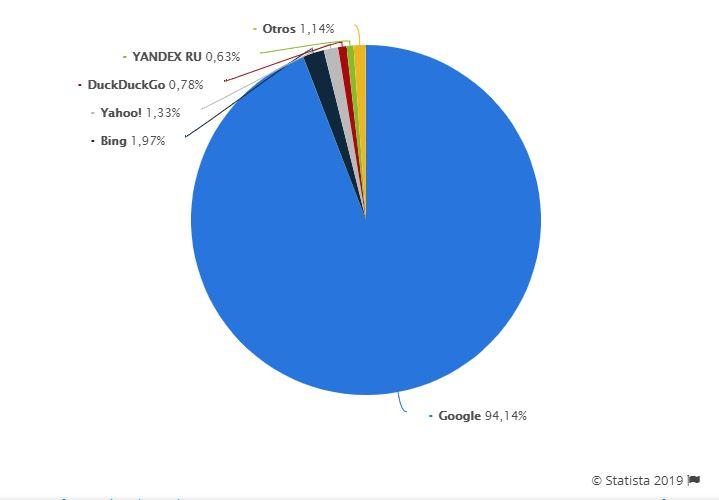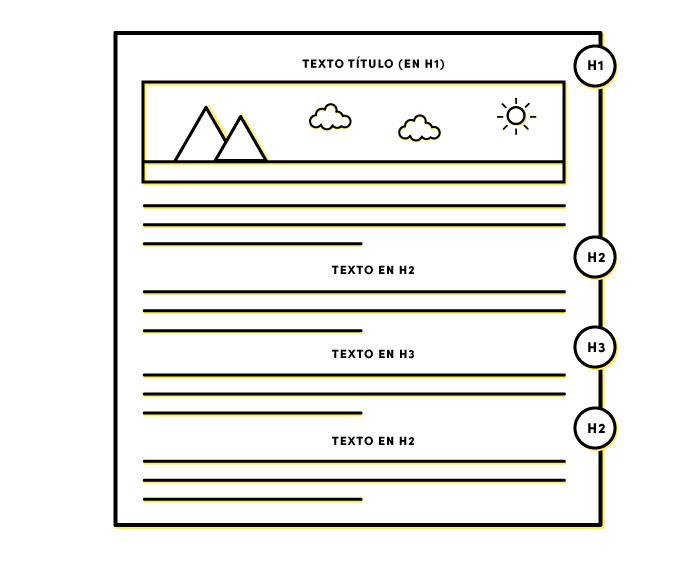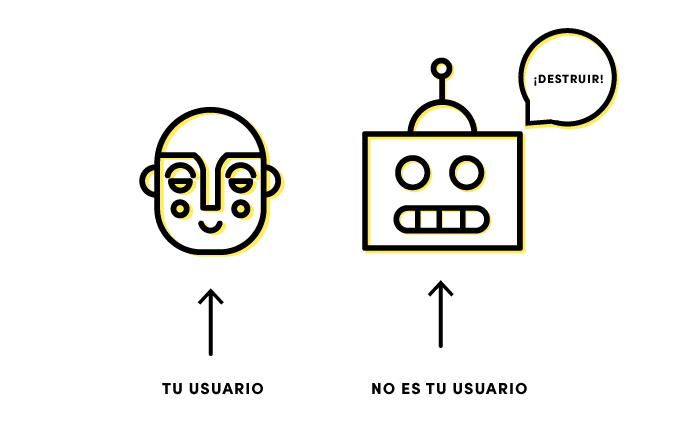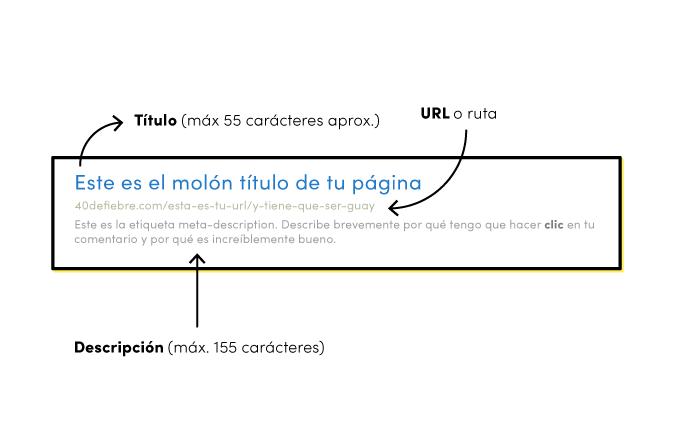SEO Writing: Guide to Writing Articles That Conquer Your Users and Google
SEO Writing: Guide to Writing Articles That Conquer Your Users and Google
Learn about the best practices to position an article on the first page, after the latest updates from Google

In our previous article, on how to appear in the first places of Google, we explained the importance of web positioning in Inbound Marketing. We concluded that having a blog reinforces the content strategy and that we must apply SEO writing so that the articles are friendly with the search engines. So the immediate question is: how do I do that?
To begin … What is SEO?
SEO is the set of techniques that must be applied so that a web page is positioned in the first places of the search engines. In this article, we are going to focus on Google, which is used by 90% of the market share, according to Statista 2019 figures .

What should we include in SEO writing?
An SEO optimized article should have the following characteristics:
- ✔ Create quality content
- ✔ Focus on a keyword
- ✔ Use inbound and outbound links
- ✔ Optimize images with SEO
- ✔ Use subtitles with the keyword
- ✔ Meet certain readability standards
Many copywriters know the importance of SEO, but they make blunders when applying it to their articles. It is for this reason that we are going to explain, step by step, what are the best practices ( endorsed by the Google algorithm ) to increase the organic visibility of content.
Keywords in SEO writing
Keywords are the terms that our target audience uses to search on Google. Having this information at hand is vital to know the needs, concerns and concerns of users about the product or service offered by the company.
Our content has to respond to these queries, offer quality, original and relevant information for the audience. For this, it is necessary to carry out a keyword audit: investigate which are the most searched keywords, what traffic they generate to other websites and the level of competition.
Where do the keywords go?
- ✔ In the article title
- ✔ In the subtitles
- ✔ In the first paragraph
- ✔ In the last paragraph
- ✔ In the article URL (slug)
- ✔ In the meta description
- ✔ In the attributes of the images
- ✔ In the body of the text
Anatomy of an SEO article
The next step is to develop the content structure. At this point it is important that you organize the information and take advantage of the subtitles (H2, H3 and H4). It is advisable to write paragraphs of three to five lines. And every three paragraphs, include an H2.

Sort your content
Technically, an article must have a clean and consistent structure. For this there are the following resources:
Subtitles : There are several levels. There is the H1, which is basically the title of the note. H2, which are the main subtitles and under which we can develop the H3.
Bold : Bold is used to highlight the most important ideas in the content. Also, if that piece of text has the keyword, it will add a grain of sand to the subject of SEO positioning.
Bullets: Bullets are very attractive to readers. They usually represent a visual break and help you digest the content easily.
Images: I will quote an old saying: “a picture is worth a thousand words”. This element, used well, has the ability to capture the reader’s attention long before the words. According to a Hubspot study , 32% of marketers say that images are the content that attracts the most visits to their companies website.
Importance of the first paragraph in SEO writing
You will find very little on the internet about the importance of the first paragraph in SEO articles. But certainly, that piece of text is what grabs the reader. It is necessary to make it attractive, dynamic and creative. In addition, it must contain the chosen keyword.
Be careful with the subtitles!
Although we mentioned them before, there is more to say about the subtitles. When Google’s “spiders” search for information to build the list of results, they crawl the keywords in the H1, H2 and H3. Thus they measure the level of agreement with the user’s query and the quality of the content.
Ideal amount of text in SEO copywriting
According to Hubspot research , the articles that lead the first page of Google, have an average of 1890 words. However, the algorithm prioritizes quality content.
If your article is 2000 words long, but doesn’t add novelty or relevance, then it will be overshadowed by others.
Keyword density
Keyword density refers to the percentage of times you must repeat the keyword in the text, in relation to the total number of words.
Long ago, iterating over and over again the keyword was essential for good positioning. However, the rules changed. Now the priority is the quality of content.
Currently, the algorithm places less importance on repetitions, but it continues to be a determining factor for searches. It is recommended not to exceed 3% density.
Readability of SEO wording
The most important factor for users to appreciate the content and be willing to share it is that they can read and understand it easily.
Did you know that people never read articles the first time? they scan it. Therefore, a good article should be:
- ✔ Simple, that anyone can understand.
- ✔ Have short and concise ideas
- ✔ And usable: with lists, subtitles and good use of bold.
For that, we must take into account the following good practices:
Length of the sentences : They should not have more than 20 words. You can always say the same with less text.
Paragraph length : Minimum 3 lines, maximum 5. It is easier for the reader to scan short paragraphs.
Subtitle layout : Every three paragraphs, use a subtitle. Search engines use subtitles to catalog your content, helping natural positioning.
Consecutive sentences: The readability analysis deducts points when there are 3 or more sentences that start the same. Now, if you use it as a creative resource, in lists, precisely to emphasize something important, do not pay too much attention to this parameter.
Use of passive voices: A passive phrase is more difficult to understand. Do you want an example?
Active voice: Google analyzes the readability of your content.
Passive voice: The readability of your content is analyzed by Google.
Use of transition words : The transition words are the connectives. Use them wisely to make the content easier to read.
How to write for users?
Although it is painful to say, many copywriters must remember that they write for people and not for robots. To learn how to write SEO content, the main thing is to create content with purpose.

In 2011, Google updated its algorithm to highlight articles with better information quality. Penalizing those who do not meet the following parameters:
Originality : The text must be completely new.
Avoid Keyword Stuffing: By this we mean repeating the keyword excessively. You need to stick to the recommended density (3%).
Attractive content: Google values the social relevance of articles. The more people share and recommend it, the faster you will climb to the top of the ranking.
SEO writing oriented to the Buyer Persona and the purchase cycle
Remember that the main objective of the article is to satisfy the need for information that a certain Buyer Persona has. Your writing responds to a content strategy, it has a reason for being.
When you start writing about a new topic, think of your reader. What do you want to know? What language is best suited to your age and profession? What do you find attractive? Most importantly, what stage of the buying cycle are you in?
If you have these clear ideas, you will surely develop a powerful article. Able to convert strangers into sales opportunities and leads into customers.
Novelty
Novelty and originality are hot topics in Content Marketing. It is enough to search for a topic on the internet, to discover that almost everything is said. Millions and millions of pages have content similar to yours. How to innovate then?
There are many ways to make a difference, we recommend the following:
- ✔ Find the best result, read it and beat it
- ✔ Explain things better
- ✔ Be creative
- ✔ Use infographics or charts
- ✔ Research the latest updates on the topic, some results were published two or three years ago.
- ✔ Develop a clever title and engaging meta description: Sometimes just that is necessary to win a reader.
- ✔ Don’t be boring
Snippet Composition: Key Factor in SEO Copywriting

The Snippet is the summary box that appears in Google results. It is composed of a title, the URL of the web page and the meta description of the article. The more attractive you are, the more clicks your users will make, which will have a positive impact on the CTR of the website.
Qualification
It must be attractive and have between 50 and 70 characters. Another tip is to try, if possible, to place the keyword at the beginning of the title. Although the Google algorithm has recently prioritized factors such as the quality of content, over the location of the keyword.
Friendly url
Content managers such as WordPress, allow you to modify the slug of the article. The SEO optimization that we apply in this box is to rewrite the URL so that it contains the keyword. We must also eliminate all those conjunctions, prepositions or terms that do not add value. Example:
Good : / how-to-write-content-SEO
Bad : / how-to-write-perfect-seo-content
Also, the depth of the URL for a blog should be top notch. Example:
Good: / how-to-write-seo-content
Bad: / 10-21-19 / content-marketing / how-to-write-seo-content
Meta description
If everyone understood the importance of meta description, they would spend a little more time and creativity on it. This block of text, which is basically a very brief summary of the article, is the first contact of users with your content. If what they read is not appealing to them, they will click on another result. The keyword must also appear in this space. Example:
Good: Wondering how to write SEO content ? We tell you 15 infallible secrets to position yourself on the first page of Google.
Bad : We created a guide for you to learn how to write SEO articles
In relation to the amount of text, the recommended is 115 to 155 characters. Although you should consider the size of some letters. For example, if you have many “M”, “W”, “O”, you should write less text, than with the “i”, “l” or “j”. Otherwise, the content will appear incomplete.
Inbound and outbound links
Another factor that the Google algorithm takes into account is the link structure
from the website. For this reason, in each article, it is advisable to include at least one internal and one external hyperlink.
The internal links allow us to tell you (and Google) what other related items has the website and how deep is our mastery of the subject. While external links offer additional information, content sources and boost our domain of authority.
Tips for external links:
✔ We must link to reputable websites in our branch
✔ Choose sites that have quality information, instead of putting many links to low traffic websites.
✔ Take care of the anchor text (the visible text that is above the link). Try to put synonyms of the keyword plus an extract of a few words, which shows the value of the information that we are recommending.
Image SEO optimization
The SEO of your article can be affected if you do not optimize the attributes of the images. In fact, this element can be the key to attracting hundreds of visits to your article. These are the technical aspects that you should take into account:
Image size : Make sure it is as light as possible, adapted to the size that the blog needs and with good resolution. Failure to do so could delay the page load time and affect the user experience. That would skyrocket the bounce rate.
File name: Save the file with terms that describe the image, trying to include the keyword as much as possible. All words must be without accents and separated by hyphens. Example: structure-article-seo
Alt attributes (alternative text): Although Google’s artificial intelligence is getting more and more impressive, it still needs a little help to understand the content of the images. You need to add a descriptive phrase that includes (where possible) the keyword. But be careful, in a text with several images, it is not advisable to put the keyword to all the attributes or Google could penalize us.
Caption: Although very few bloggers use it, it generally helps positioning in Google Images.
Summarizing…
What does Google want? Help users.
Understanding that formula is the key to SEO success. And it makes a lot of logic. Search engines are getting smarter, they recognize the intention behind queries. Its only goal is to give users what they are looking for.
Although technical requirements are fundamental to the algorithm, some social issues such as user interest and recommendations are becoming more relevant.
That is why in SEO writing, you must maintain a balance between the quality of information and technical optimizations. That is the secret to surviving the 500 daily updates that Google applies to its algorithm.







